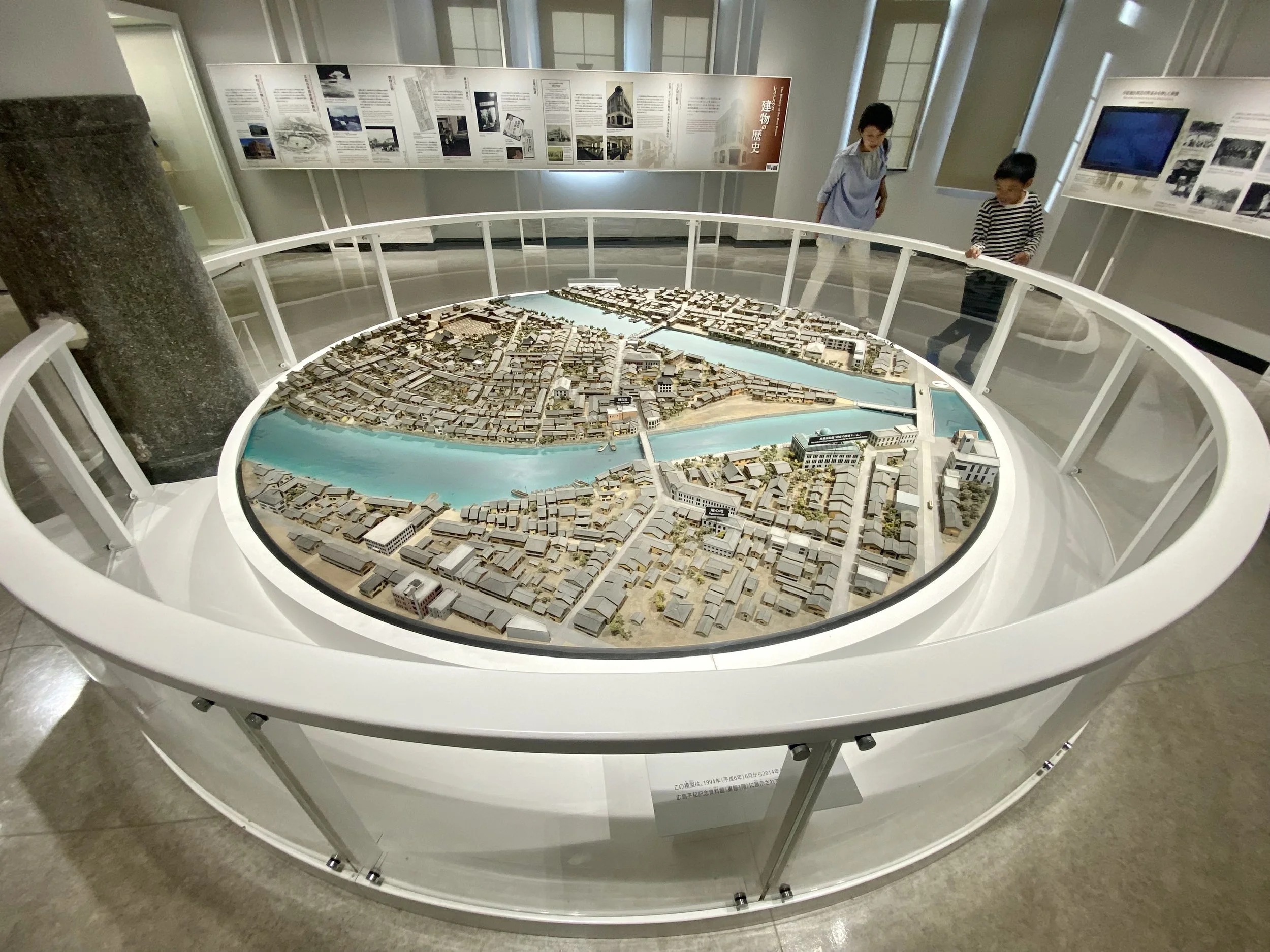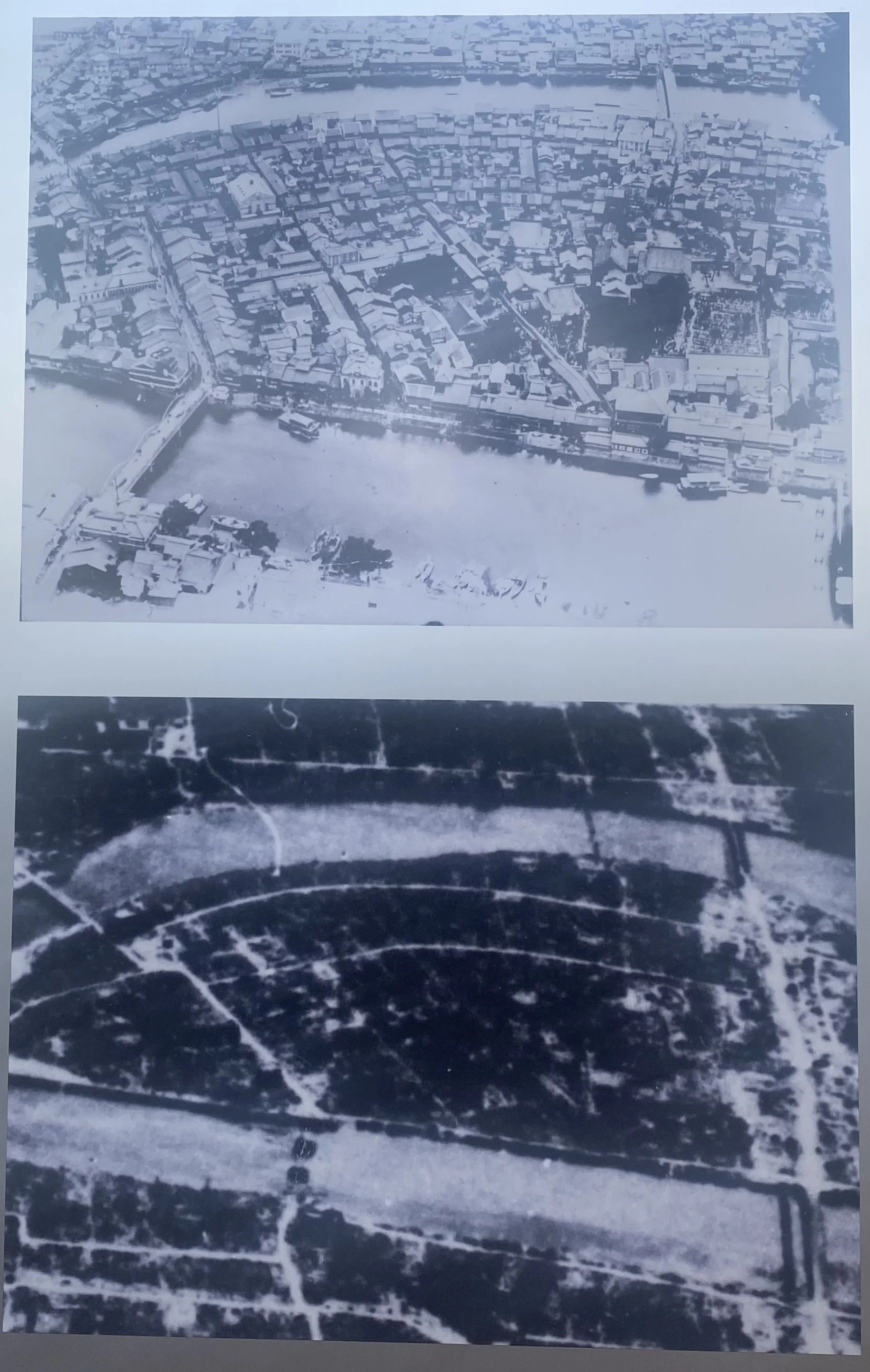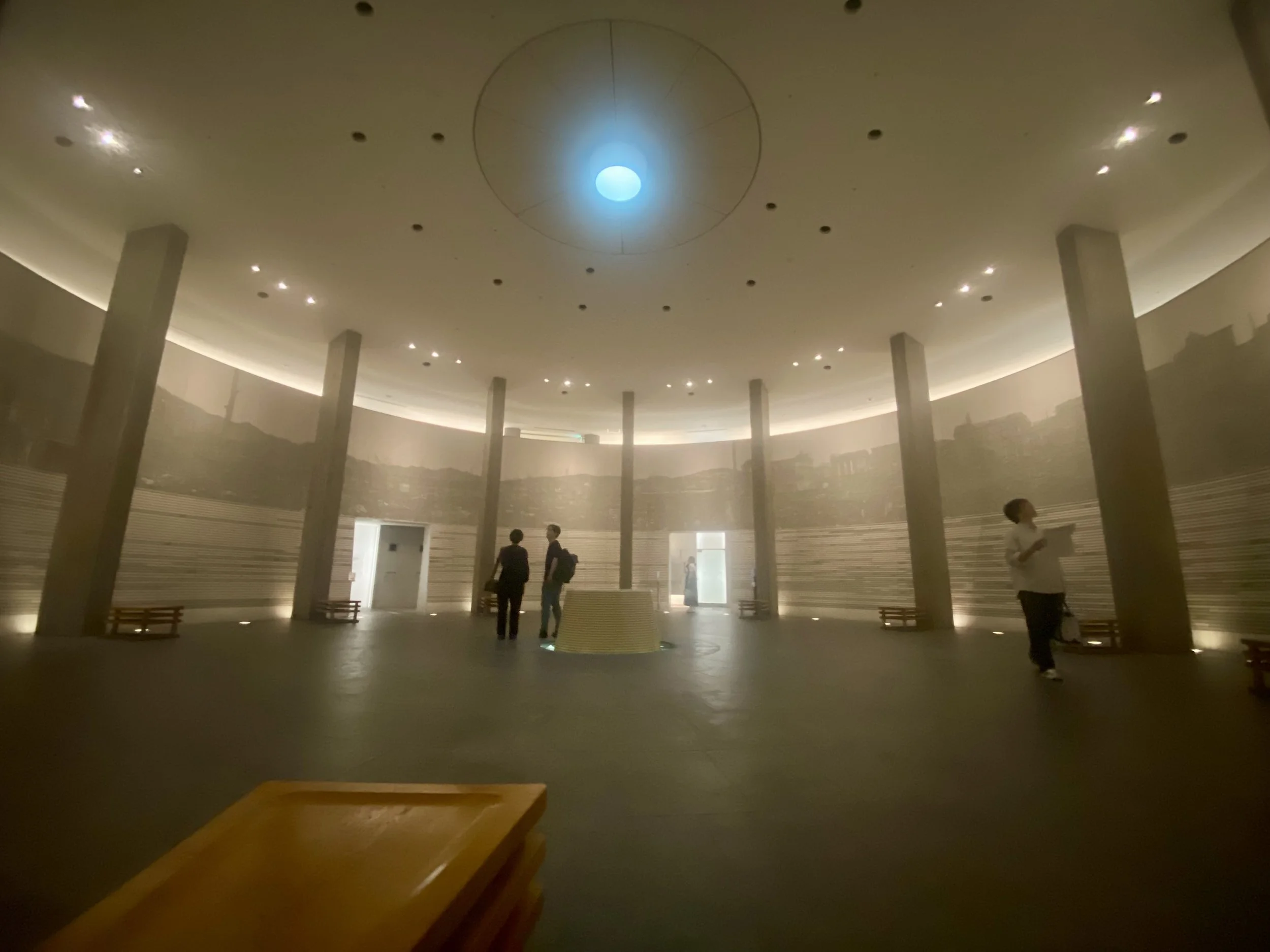Hiroshima 広島
11th October - 12th October
Another ferry this morning heading back to the main island on Honshu. The mood amongst the tour group is subdued and contemplative, a mood arising from leaving the less travelled part of Japan knowing that this in turn meant that the tour, any for many the whole trip to Japan, was coming to an end. There is also a sense of foreboding that we on our way to the city that, eighty years ago this year, witnessed the most instantaneously awful and cataclysmic event in modern war fair.
At first sight, the city is built up and modern like pretty much every other that we have been to in Japan so far.
We drop our bags at the hotel and have a quick bite to eat before Patrick leads us through the principal sites of the devastated area and into the start of the Peace Park. We will wait until the next morning to visit the Peace Memorial Museum in order to try to avoid the crowds of other visitors.
First stop is the ‘T’ bridge which, as it is easily identifiable from the air, was the target point for the bomber in the US B29 aeroplane Enola Gay. The bomb was slightly off target when it detonated on the other side of the Atomic Bomb Dome shown in the photo here.
A memorial stone stands at the spot, 600m above which, the Uranium charged bomb exploded at 8.15 am on 6th August 1945. Ground temperatures of 3000 - 4000 degrees Celsius were generated almost instantaneously killing 80,000 of the city’s 350,000 inhabitants. Firestorms spread through the predominantly timber homes and shops for three days after the blast destroying 92% of the structures across a 3km radius.
We visited a building that was in between the blast and the A Bomb Dome where some workers in the shop had been in the basement at the moment of the blast and one survived. His story was recorded in displays on the walls in that room below ground with photographs taken days after the explosion. It brought home the ordinary of the people living in the city just getting on with their daily life in the minutes before their world changed so dramatically.
A permanent display on the upper floors of the reconstructed building included this model of the city before the bomb. It had been saved from any bombing raids prior to the 6th August in order that the extent of the aftermath from the single strike could be properly assessed in the days and weeks that followed.
The A Bomb Dome building stands as a permanent reminder of the horror of a nuclear strike although there are some Japanese that would rather have it removed to allow the city to move on.
Built in 1915 in a steel and concrete construction, the government building was an exception to most of the other low level timber buildings that surrounded it and was consequently one of the very few buildings close to the hypercentre of the explosion to remain standing.
A view of the A Bomb Dome from the central island which is now given over to the Peace Memorial Park.
The Hiroshima Peace Memorial Museum was designed by Kenzo Tange in 1949 and completed in 1955.
Views from the building across the Peace Memorial Park always lead back to the carcass of the A Bomb Dome
After a quiet evening and night we return to the museum the next morning and entered into it by 9 o’clock. It was already mobbed with solemn looking tourists. We joined them and shuffled through the corridors and rooms of the exhibition halls. I didn’t feel inclined to take many photos and, like most others there, struggled with my emotions at the horror that was revealed.
The lonely Planet’s description of the place is a very good summary:
‘ The main building of Hiroshima’s premier museum houses a collection of items salvaged from the aftermath of the atomic bomb. The displays are confronting and personal - ragged clothes, a child’s melted lunchbox, a watch stopped at 8.15 and there are some grim photographs.’
None of the of the passing audience were smiling and many were sniffing as they tried to hold back their tears.
Crossing the bridge into the west gallery the exhibits and descriptions turned to a detailed analysis of the three year development programme for the making of the bombs that were dropped first on Hiroshima then three days later on Nagasaki.
The enthusiasm of the scientists and the Western leaders in this endeavour was a marked contrast from the previous galleries and demonstrated the convenience of distance to provide a morally higher ground over the few that are made to suffer for world peace.
The fragility of that peace during the eight decades since is also explored and explained here with the underlying message that it should never happen again. Perhaps if every world leader that has the power and authority to launch a nuclear strike were obliged to come to visit this museum on an annual basis, the chances of retaining that peace might increase.
The Peace Memorial Park is full of further exhibits showing fragments of the life that preceded the bomb as well as remembering those that perished. The memorial Hall was the best of these with a vast underground chamber whose walls are inscribed with many thousands of the victims names.













